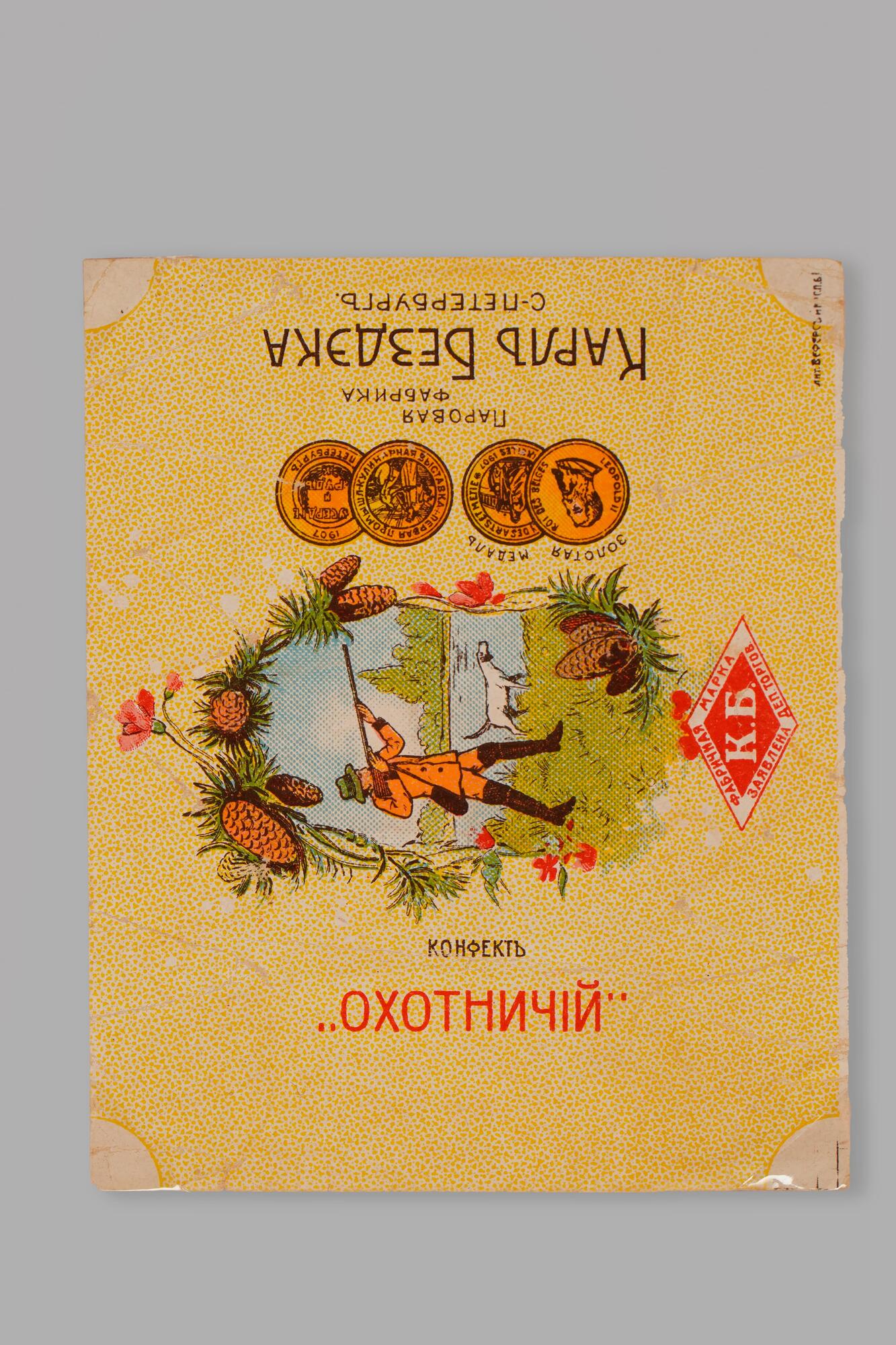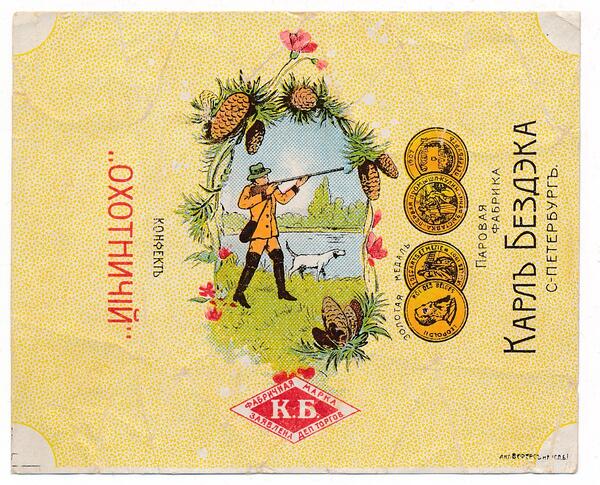The first sweets appeared centuries ago. In ancient Egypt, they were made from honey and dates, in ancient Rome — from honey, poppy seeds, sesame and nuts, in Russia — from honey or molasses, fruit and spices. The invariable sweet component, honey, became less important only with the advent of sugar and chocolate in Europe. At the same time, the era of sweets as we know them began.
For a long time, until the 18th and 19th centuries, sweets were wrapped in cloth or paper only for transportation or storage. The first simple wrappers, according to historians, appeared in Russia during the reign of Peter I. But sweets were always served without wrappers, in a vase or on a dish, and they were taken with special tweezers. An exception was made for chocolates: they were wrapped in foil, the color of which signified the type of filling.
об
Wrapping paper appeared at the end of the 18th century. It was then that flat printing was invented in Germany, and wrappers became bright and attractive, reproducing famous pictures. Such wrappers were often used to play games.
According to one version, the Russian word “fantik” (wrapper) comes from the German “Pfand”, which means “pledge” and refers specifically to the eponymous game. According to another version, the word came from America and derives from the phrase “funny ticket”. Candies were wrapped in such “tickets” for children.
Over time, Russian entrepreneurs appreciated the advertising opportunities of the wrapper. At first, only the names of products were printed on candy wrappers. But by the late 19th century, in Saint Petersburg alone, such large manufacturers as G. Landrin, M. Conradi, Georges Bormann, the Eliseev Brothers, Karl Bezdeka and others appeared, and competition became inevitable. To draw attention to their products, confectioners began to pay great attention to packaging. The material for the wrapper, the font, the ornament, the color scheme, the artistic concept — everything mattered. A set of sweets could be used to learn the alphabet or the multiplication table, enjoy riddles, and read horoscopes. The wrappers were decorated with printed designs developed by Ivan Bilibin, Konstantin Somov, Viktor Vasnetsov, and Mikhail Vrubel.
Confectioners received an unexpected gift in 1872 from Thomas Edison. Waxed telegraph paper that he invented turned out to be the most suitable material for candy wrappers.
This paper and foil made products not only more attractive, but also more affordable: now confectioners could give up the obligatory boxes and sell candies in bulk without fearing to spoil them.
For a long time, until the 18th and 19th centuries, sweets were wrapped in cloth or paper only for transportation or storage. The first simple wrappers, according to historians, appeared in Russia during the reign of Peter I. But sweets were always served without wrappers, in a vase or on a dish, and they were taken with special tweezers. An exception was made for chocolates: they were wrapped in foil, the color of which signified the type of filling.
об
Wrapping paper appeared at the end of the 18th century. It was then that flat printing was invented in Germany, and wrappers became bright and attractive, reproducing famous pictures. Such wrappers were often used to play games.
According to one version, the Russian word “fantik” (wrapper) comes from the German “Pfand”, which means “pledge” and refers specifically to the eponymous game. According to another version, the word came from America and derives from the phrase “funny ticket”. Candies were wrapped in such “tickets” for children.
Over time, Russian entrepreneurs appreciated the advertising opportunities of the wrapper. At first, only the names of products were printed on candy wrappers. But by the late 19th century, in Saint Petersburg alone, such large manufacturers as G. Landrin, M. Conradi, Georges Bormann, the Eliseev Brothers, Karl Bezdeka and others appeared, and competition became inevitable. To draw attention to their products, confectioners began to pay great attention to packaging. The material for the wrapper, the font, the ornament, the color scheme, the artistic concept — everything mattered. A set of sweets could be used to learn the alphabet or the multiplication table, enjoy riddles, and read horoscopes. The wrappers were decorated with printed designs developed by Ivan Bilibin, Konstantin Somov, Viktor Vasnetsov, and Mikhail Vrubel.
Confectioners received an unexpected gift in 1872 from Thomas Edison. Waxed telegraph paper that he invented turned out to be the most suitable material for candy wrappers.
This paper and foil made products not only more attractive, but also more affordable: now confectioners could give up the obligatory boxes and sell candies in bulk without fearing to spoil them.



